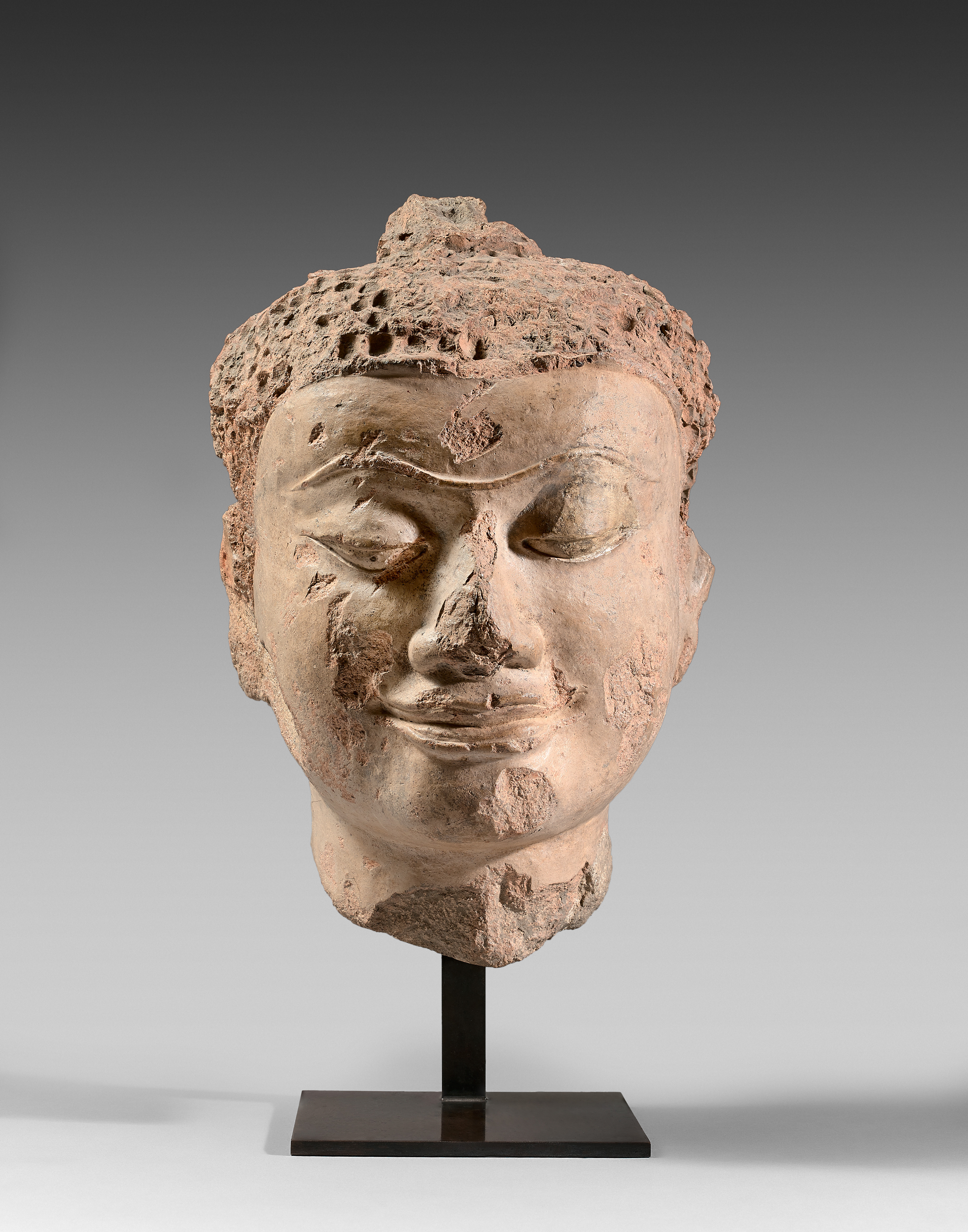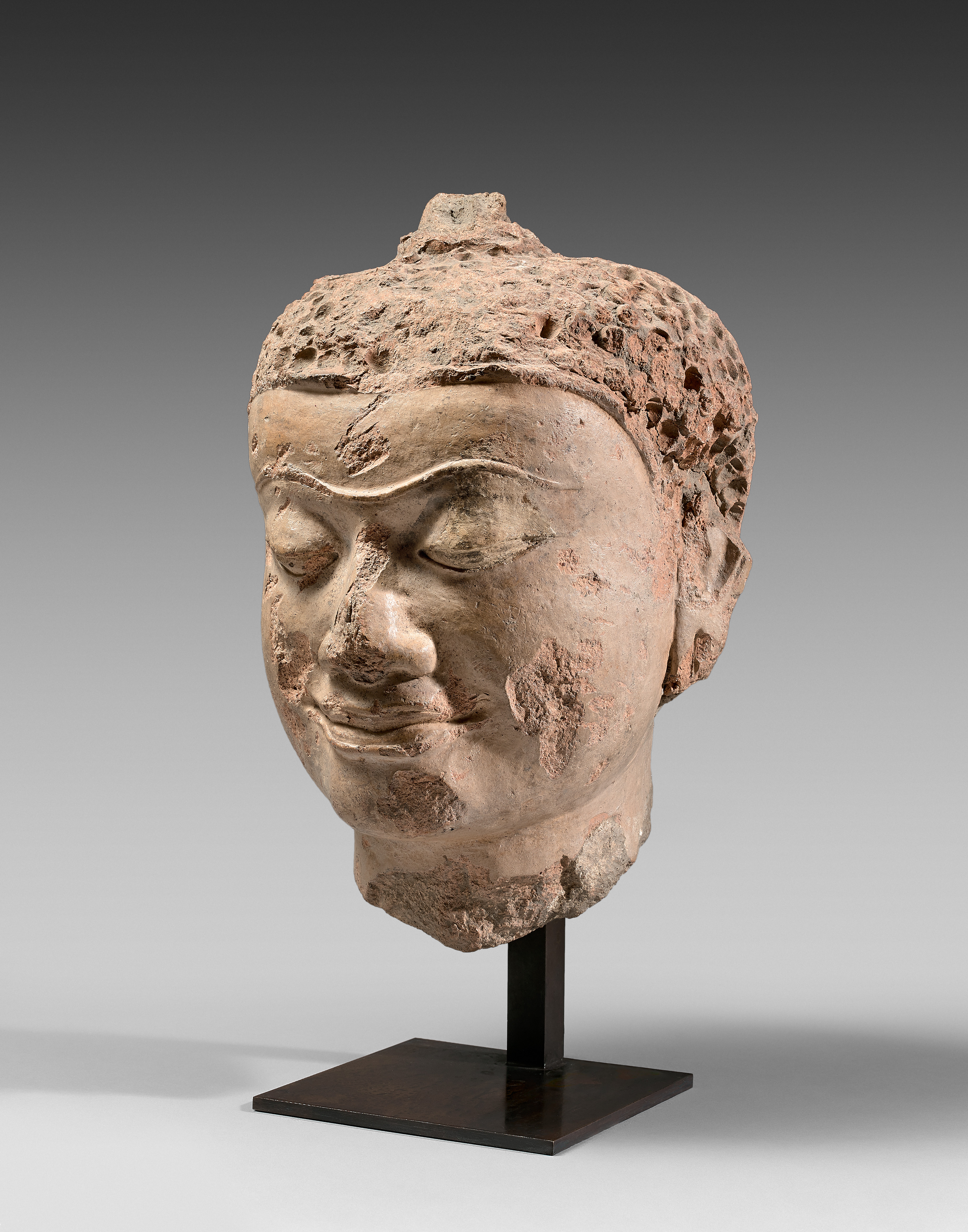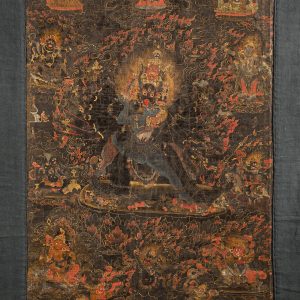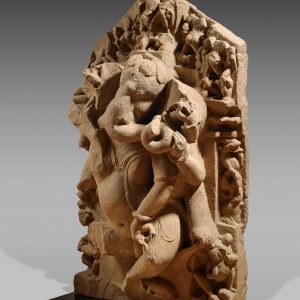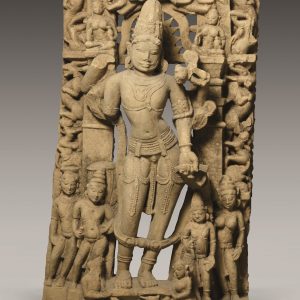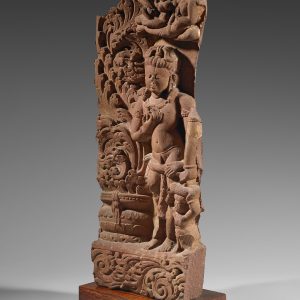Harīpunjaya Buddha Head
Description
This incredible Buddha head made of stuccoed terracotta is characteristic of the Mon kingdom of Harīpunjaya, located in northern Thailand. Dated from the 12th-13th centuries, it is 27 cm high (or 10 ⅝ in). A 2009 exhibition at the Guimet Museum in Paris showed all the exceptionality and originality of this type of artwork, of which only rare examples of this quality remain.
This kingdom of Harīpunjaya, founded in the 8th century, flourished until the end of the 13th century and developed simultaneously with Dvāravatī kingdom and the Khmer kingdom of Lop’burī, both of which brought stylistic influences. The art of Harīpunjaya is the original combination of these artistic contributions, leading to the production of sculptures of exceptional expressiveness.
The expressive character of the Mon features can be found on this piece: the large face with the forehead widening at the temples, the high and marked cheekbones, the wide nose and the full lips hemmed with a double thick line. The eyes are bulging and the upper eyelid is lowered. The pupil, signified by a small hole, is a distinctive feature of Harīpunjaya. The eyebrows form a continuous, slightly undulating line.
The hair, delimited by a characteristic border, consists of small cavities. They were once filled with spiky conical curls that were traditionally shaped separately and then applied. Another typical feature of the Harīpunjaya style is the narrow uṣṇīṣa with a conical shape. This head is comparable to the images of Buddha decorating Chedi Ku Kut in Lamphun, and dated from the 12th – 13th centuries.
Provenance: Private collection, France, acquired in 1960-1970.

